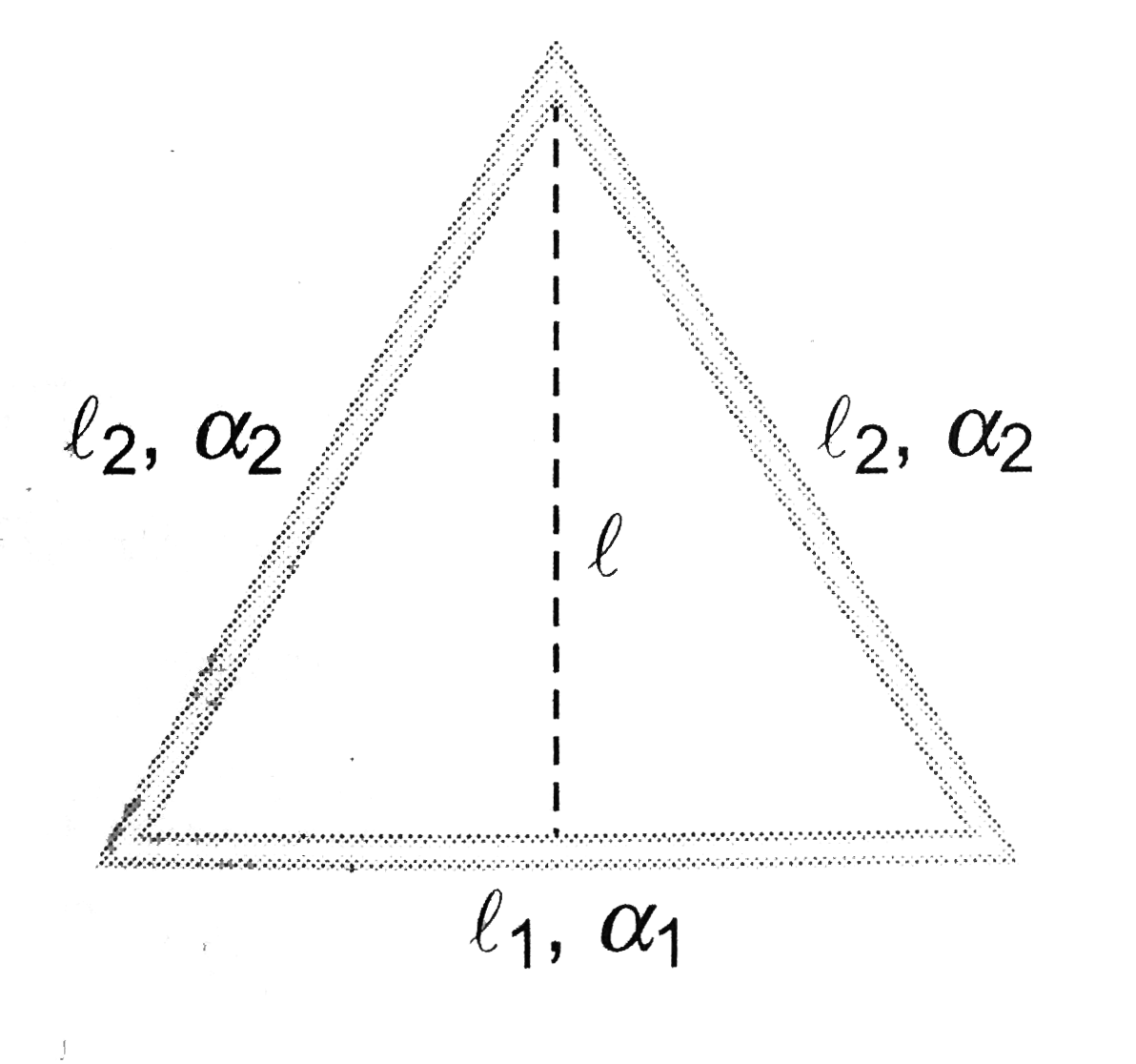There are two rods of length l1 and l2 and coefficient of linear expansions are α1 and α2 respectively.
Find equivalent coefficient of thermal expansion for their combination in series.
α1+α22
α1l1+α2l2α1+α2
(α1l1+α2l2)/(l1+l2)
√α1α2
The correct Answer is:C
To find the equivalent coefficient of thermal expansion for two rods connected in series, we can follow these steps:
1. Identify the lengths and coefficients of expansion:
- Let the lengths of the two rods be l1 and l2.
- Let the coefficients of linear expansion be α1 and α2 respectively.
2. Determine the total length:
- When the rods are connected in series, the total length L of the combination is given by:
L=l1+l2
3. Calculate the change in length for each rod:
- When the temperature increases by ΔT, the change in length for the first rod (Δl1) is:
Δl1=α1ΔT⋅l1
- The change in length for the second rod (Δl2) is:
Δl2=α2ΔT⋅l2
4. Express the total change in length:
- The total change in length ΔL for the combination of the two rods is the sum of the changes in length of both rods:
ΔL=Δl1+Δl2=α1ΔT⋅l1+α2ΔT⋅l2
5. Relate the total change in length to the equivalent coefficient of expansion:
- We can express the total change in length in terms of the equivalent coefficient of thermal expansion αequiv:
ΔL=αequivΔT⋅L
- Substituting L=l1+l2 into the equation gives:
ΔL=αequivΔT⋅(l1+l2)
6. Set the two expressions for ΔL equal to each other:
- From the two expressions for ΔL:
α1ΔT⋅l1+α2ΔT⋅l2=αequivΔT⋅(l1+l2)
7. Cancel ΔT from both sides (assuming ΔT≠0):
- This simplifies to:
α1l1+α2l2=αequiv(l1+l2)
8. Solve for αequiv:
- Rearranging gives:
αequiv=α1l1+α2l2l1+l2
Final Result:
The equivalent coefficient of thermal expansion for the two rods in series is:
αequiv=α1l1+α2l2l1+l2
- Let the lengths of the two rods be l1 and l2.
- Let the coefficients of linear expansion be α1 and α2 respectively.
- When the rods are connected in series, the total length L of the combination is given by:
L=l1+l2
- When the temperature increases by ΔT, the change in length for the first rod (Δl1) is:
Δl1=α1ΔT⋅l1
- The change in length for the second rod (Δl2) is:
Δl2=α2ΔT⋅l2
- The total change in length ΔL for the combination of the two rods is the sum of the changes in length of both rods:
ΔL=Δl1+Δl2=α1ΔT⋅l1+α2ΔT⋅l2
- We can express the total change in length in terms of the equivalent coefficient of thermal expansion αequiv:
ΔL=αequivΔT⋅L
- Substituting L=l1+l2 into the equation gives:
ΔL=αequivΔT⋅(l1+l2)
- From the two expressions for ΔL:
α1ΔT⋅l1+α2ΔT⋅l2=αequivΔT⋅(l1+l2)
- This simplifies to:
α1l1+α2l2=αequiv(l1+l2)
- Rearranging gives:
αequiv=α1l1+α2l2l1+l2
The equivalent coefficient of thermal expansion for the two rods in series is:
αequiv=α1l1+α2l2l1+l2
Topper's Solved these Questions
Similar Questions
Two metallic rods of length l and 3l have coefficient of linear expansion α and 3α respectively. The coefficient of linear expansion ofr their series combinations, is
View SolutionIf two rods of length L and 2L having coefficients of linear expansion α and 2α respectively are connected so that total length becomes 3L, the average coefficient of linear expansion of the composite rod equals
View SolutionIf two rods of length L and 2L having coefficients of linear expansion α and 2α respectively are connected so that total length becomes 3L, the average coefficient of linear expansion of the composite rod equals
View SolutionTwo rods having length l1 and l2, made of materials with the linear coefficient of expansion α1 and α2 were welded together. The equivalent coefficients of linear expansion for the obtained rod:-

View SolutionTwo rods of length l1 and l2 are made of material whose coefficient of linear expansion are α1 and α2 , respectively. The difference between their lengths will be independent of temperatiure if l1/l2 is to
View SolutionTwo rods of lengths l1andl2 are made of materials having coefficients of linear expansion α1andα2 respectively. What could be the relation between above values, if the difference in the lengths of the two rods does not depends on temperature variation?
View SolutionAn isosceles triangles is formed with a thin rod of length l1 and coefficient of linear expansion α1, as the base and two thin rods each of length l2 and coefficient of linear expansion α2 as the two sides. The distance between the apex and the midpoint of the base remain unchanged as the temperature is varied. the ratio of lengths l1l2 is

View SolutionAn isosceles triangles is formed with a thin rod of length l1 and coefficient of linear expansion α1, as the base and two thin rods each of length l2 and coefficient of linear expansion α2 as the two sides. The distance between the apex and the midpoint of the base remain unchanged as the temperature is varied. the ratio of lengths l1l2 is

View SolutionAn isosceles triangles is formed with a thin rod of length l1 and coefficient of linear expansion α1, as the base and two thin rods each of length l2 and coefficient of linear expansion α2 as the two sides. The distance between the apex and the midpoint of the base remain unchanged as the temperature is varied. the ratio of lengths l1l2 is

View SolutionSTATEMENT - 1 : A metallic rod placed upon smooth surface is heated. The strain produced is ZERO.
STATEMENT - 2 : Strain is non-zero only when stress is developed in the rod.
STATEMENT - 3 : Two metallic rods of length l1 and l2 and coefficient of linear expansion α1 and α2 are heated such that the difference of their length ramains same at ALL termperatures Then α1α2=l2l1
View Solution
